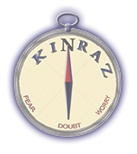Back to the
SHOWROOM

PARTIAL OVERLAY DOOR STYLE
(usually shows 1" of frame)
FULL OVERLAY DOORSTYLE
(usually shows only 1/4" of frame)

PARTIAL OVERLAY

FULL OVERLAY
This will be a topic which you’ll want to pay close attention to. When it comes to the overlays on door styles, one of the main differences between a partial overlay door style and a full overlay door style is this; on a partial overlay door style you can see more of the face frame when the doors are closed. Generally, partial overlay door styles are a little bit less expensive than full overlay door styles because they take less wood to make the doors and drawer fronts. On a full overlay door style, practically the door and drawer front cover the entire face frame of the cabinet. You can only see about one quarter of an inch of the face frame on a full overlay door style.
When you have a partial overlay door style up against the wall you will have more clearance available, so that when the doors and drawers open you are less likely to hit any door casing or scrape the wall. On a full overlay door style when it is up against the wall and the drawer opens up, it is possible that it may scrape against an uneven wall or hit the window or door casing, leaving it unable to open all the way. Generally, full overlay door styles are more expensive than partial overlay door styles and they give a totally different look than a partial overlay door style. There is no good or bad in either of them, it just depends on what style you are looking for. The partial overlay door styles are also good when you are going to run cabinets right to the ceiling. They will give you about 1 inch of space so that when your door opens up it will not scrape the ceiling, or hit any type of soffit, lighting, or recessed lighting. You can also run full overlay door styles up against walls and ceilings, you’ll just need a soffit spacer moulding or a filler, to ensure adequate clearances.
A good example here will be a tall cabinet up against a wall with roll-out trays in it. In order for the roll-out trays to function properly the door needs to open up to 90 degrees, so the roll-out tray won’t scrape the inside of the cabinet door.



